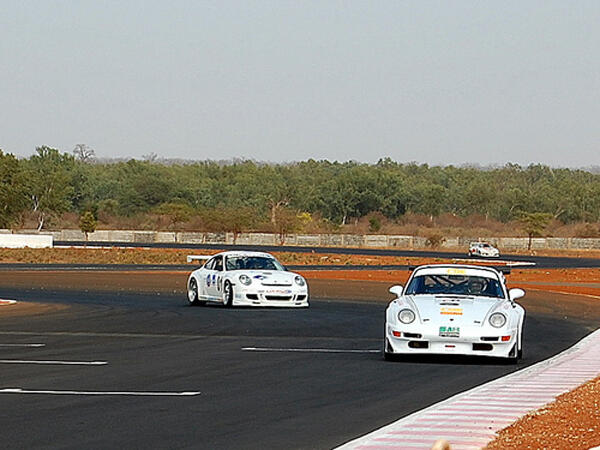This will not have escaped your notice; the MotoGP world championship does not take place on five continents. Indeed, since 2004, Africa has no longer been represented, and we find that a shame. This exponentially growing continent is well worth a race, because there are many enthusiasts there; Today, let's look at the question through the study of a little-known circuit in Europe.
Why a MotoGP Grand Prix in Africa would make sense
First of all, Africa is not unknown in the world of Grand Prix. Throughout history, many more than talented, sometimes legendary, pilots had close relationships with the African continent; sometimes they were born there, sometimes they lived there. We are thinking of all the Rhodesians, a country linked to the history of motorcycle GPs which we will study in detail in a few days. Among them, Ray Amm, Jim Redman and Gary Hocking, 1961 500cc world champion.
Of course, it’s impossible not to mention the South Africans, on two wheels (Kork Ballington,
Jon Ekerold…) or four, like Jody Scheckter, Formula 1 world champion in 1979. In any case, motor sports have often been concentrated in the South of the continent, until recently. We count 10 editions of the South African Grand Prix contested on the legendary Kyalami track (between Johannesburg and Pretoria), but also on the Phakisa Freeway, not far from Welkom, a town of just over 60,000 inhabitants located in the middle of nowhere.

There is also, of course, the Kyalami circuit in South Africa.
Without even mentioning the Formula 1 Moroccan Grand Prix or the legendary Paris-Dakar, we understand that motor sports are not new for Africans ; it would make sense to come back to it. Besides, F1 doesn't set foot there either. Discussions were underway with the Kyalami circuit but the situation remains at a standstill. So, it would be interesting, for once, to get ahead of this championship which swallows everything in its path, by paying homage to a passionate continent, where small-displacement motorized transport is legion. Moreover, certain countries are setting up their own companies dedicated to the design of electric two-wheelers.
With a young population, it would be possible to offer a beautiful show in a different setting, which would make the MotoGP championship ever richerdiverse, and exciting. Clearly, this would only have advantages.
A little-known circuit
The problem of infrastructure often comes up with the African continent. Regardless of the discipline, athletes generally complain about the stadiums once you leave South Africa and the Maghreb. However, in Senegal, a completely original and viable circuit was created in 2008 ; the Dakar Baobabs route (hence the cover photo), designed by Jean-André Collard and approved by the Fédération Internationale de l'Automobile in 2009.
The track is interesting and allows the Senegalese to benefit from a solid, original and oh-so-precious infrastructure in West Africa; this is the only permanent circuit approved in this growing region of the world. Renowned for being very technical (see plot at the bottom of the article), it hosts, each year, the 6 Hours of Dakar, an event made up of two three-hour rounds which has established itself over the long term in the Senegalese sporting landscape.
-
The Baobabs circuit, located in Senegal. An interesting route.
So, of course, work would be necessary to bring the circuit up to the standards required by MotoGP but we must also promote these initiatives which can greatly benefit both parties. Its frame would make it a Grand Prix in its own right; located in the commune of Sindia in the region of Thiès, we are both close to Dakar, the capital, but also and above all a stone's throw from the Atlantic Ocean and the Blaise-Diagne international airport. Even more original, the route is located a few kilometers from the Bandia nature reserve, which is full of protected animals.
Even if there are developments to be planned, there is definitely a way to make the dream of millions come true by setting foot in this magnificent country, with an ocher color that would really contrast with the rest of the calendar. As in Southeast Asia, there is no doubt that the Senegalese would appreciate the show and would be able to welcome the world as it should. As proof, the great return of the Safari Rally WRC to Kenya in 2021, a must-see among the must-sees, brings a different touch which allows this championship to assert itself even more internationally.
Other opportunities
Even if African markets are, for the moment, less important than others on the international level, it is impossible to deny that a dynamic is being created. In the north, first, with Morocco. The Arab country will be co-host of the 2030 FIFA World Cup, with Spain and Portugal. Infrastructure is developing more and more, and Formula 1, once upon a time, has already set its wheels on these lands. It wouldn't be illogical to go there.
Speaking of Formula 1, the question of a GP in Africa has also been raised for a long time. Under the leadership of Lewis Hamilton – who has been campaigning for this for a while – the FIA and Liberty Media could turn to Rwandawhich, for several years, has launched a gigantic communications plan. Having a Formula 1 GP, and, why not, a motorcycle Grand Prix could allow him to strengthen his soft-power. This track is currently under study, but nothing has been done yet because no circuit exists at the moment.
Did you know the Dakar Baobabs circuit? Would you be inclined to see an African Grand Prix, and why not in Senegal? Tell us in the comments!

The Dakar Baobabs circuit is a unique setting. We're not used to seeing that.






